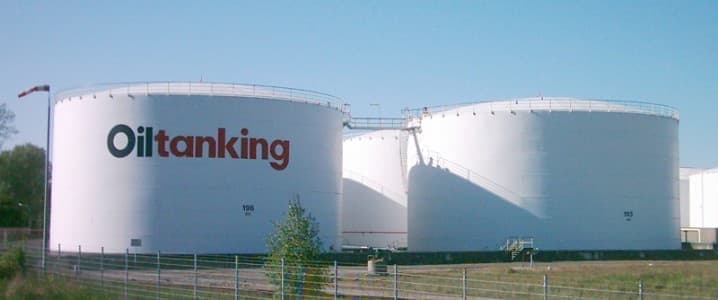
Since Russia invaded Ukraine at the end of February, the United States has banned imports of Russian energy while the UK is working to phase out its Russian supply by the end of the year. Even though Europe has not sanctioned Russian oil and gas, a growing number of European buyers are joining the wave of condemnation of Russia’s war and pledge not to buy its oil. As of last week, as much as 66 percent of Russian seaborne spot cargoes were struggling to find a buyer, according to estimates from J.P. Morgan Global Research.
The Russian invasion of Ukraine came at a time when the oil market was already tightening, with inventories in OECD economies already drawn down to well below the five-year average and sitting at their lowest levels in eight years.
Immediate Offsets To Lost Russian Oil Unwilling To Help
The immediate solution that could help offset the loss of Russian oil supply lies in the two most influential members of OPEC, which, together with Russia, have been managing supply to the market in the form of the OPEC+ agreement for several years now.
However, OPEC’s Saudi Arabia and the United Arab Emirates (UAE) – the only two producers believed to have enough spare capacity to ramp up production in the short term – have not stepped forward to fill in the widening gap that buyers’ “self-sanctioning” of Russian oil is leaving. The UAE confused the oil market last week with somewhat contradictory messages that it backs additional increases in OPEC+, but energy minister Suhail al Mazrouei later reaffirmed that the UAE would stick to the plan of gradual production increases.
“The OPEC+ alliance agreed on 2 March to stick with a modest, scheduled output rise of 400 kb/d for April, insisting no supply shortage exists. Saudi Arabia and the UAE – the only producers with substantial spare capacity – are, so far, showing no willingness to tap into their reserves,” the IEA said in its report.
On the other hand, if the Saudis and the UAE were to tap into their reserves, the global spare capacity—largely in their hands—would be so thin that a turn for the worse in the Russian oil supply, or another outage in Libya, would leave global oil producers with such a small cushion that a price spike would be certain to follow.
U.S. Shale Can’t Pump Much More Immediately
So why isn’t U.S. shale pumping more, especially with the “blessing” of the White House and Secretary of Energy Jennifer Granholm, who urged American producers “to responsibly increase short-term supply where we can right now to stabilize the market and to minimize harm to American families.
Producers have said why for months: there is a time lag between drilling and first oil, also because of years of underinvestment, capital discipline, discouraging federal policies toward the oil industry, and supply chain bottlenecks.
For example, even if ConocoPhillips decided to pump more oil today, the first drop of new oil would come within eight to 12 months, CEO Ryan Lance told CNBC last week.
“Even if shale production responds to the price signal, it cannot grow by more than 1.4 mbd this year given labor and infrastructure constraints,” J.P. Morgan said this week.
Then there is the prospect of additional barrels from Iran, but they “could be months off,” the IEA said, adding that the Islamic Republic could ramp up exports by around 1 million bpd over a six-month period when—and if—a deal is reached.
Demand Hit
The gap between global oil supply and demand could be narrower than expected just a month ago, because runaway inflation, surging energy prices, tightening monetary policies to tame said inflation, and the sanctions on Russia are likely to “appreciably depress global economic growth,” the IEA says.
The agency cut its global oil demand forecast by 1.3 million bpd through the end of this year, which would result in 950,000 bpd slower growth for 2022 than anticipated in mid-February. Total demand is now seen at 99.7 million bpd in 2022, an increase of 2.1 million bpd from 2021, the IEA added.
Even if the expected demand growth slowdown materializes, it will not offset the loss of Russian supply, leaving the market in deficit if the shunning of Russian oil accelerates and continues throughout the year.
OPEC also warned of slowing economic and oil demand growth in its own market report earlier this week. OPEC said that Russia’s war in Ukraine and the spiraling inflation could impact oil consumption growth, which “remains under assessment.” The cartel left its outlook of global oil demand growth at 4.2 million bpd for 2022, “for the time being”, but flagged “the extremely high uncertainty surrounding global macroeconomic performance.”
“Looking ahead, challenges to the global economy – especially regarding the slowdown of economic growth, rising inflation and the ongoing geopolitical turmoil will impact oil demand in various regions,” OPEC said.
“Given the complexity of the situation, the speed of developments, and fluidity of the market, with so far limited data to understand the far-reaching consequences of this conflict, projections are changing almost on a daily basis, making it challenging to pin down numbers, with reasonable degree of certainty,” the cartel said.
The next monthly meeting of the OPEC+ group led by Saudi Arabia and Russia is on March 31, and the volatile and high oil prices will likely put further pressure on the OPEC members of the alliance to boost supply more to try to offset the losses from Russia.